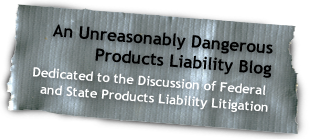On August 9, 2011, the Eastern District of Louisiana approved the distribution of attorneys’ fees following the global settlement of litigation involving Merck’s troubled drug Vioxx in In re Vioxx Product Liability Litigation, — F.3d — , No. 2:05-MD-01657, 2011 WL 3563004 (E.D. La. Aug. 9, 2011) [PDF]. Developed and marketed to treat arthritis, menstual pain and migraine headaches, the drug was approved for sale by the Federal Drug Administration on May 20, 1999. Merck pulled the drug off the market on September 20, 2004, after a clinical trial found that the drug increased the risk of cardiac incidents like stroke and heart attacks.
As expected, thousands of individual cases and multiple class actions filed against Merck in the aftermath of the recall. Eventually, those cases filed in federal court were consolidated in an MDL in the Eastern District of Louisiana. It was estimated that more than 50,000 claims were filed against Merck after 20 million patients took the medication. After consolidated discovery, several trials commenced before the parties started talking about a global settlement. Those talks were successful, and a Settlement Agreement was entered. See Settlement Agreement, In re Vioxx Prods. Liab. Litig., MDL 1657 (E.D.La. Nov. 9, 2007), available at http://www.browngreer.com/vioxxsettlement.
The Settlement Agreement gave people the ability to opt-in to resolve their pending or tolled cases against Merck, and the total amount set aside for the payment of claims was $4.85 billion. With a “b.” Apparently, according to the August 9 order, the settlements went smoothly from a logistical standpoint:
The Settlement Program proceeded at a very rapid rate and Merck made additional payments in order to ensure that the claimants would receive funds in a timely fashion. . . . [I]n only 31 months, the parties to this MDL case were able to reach a global settlement and distribute Four Billion, Three Hundred and Fifty-three Million, One Hundred Fifty-two Thousand and Sixty-four Dollars ($4,353,152,064) to 32,886 claimants, out of a pool of 49,893 eligible and enrolled claimants. This efficiency is unprecedented in mass tort settlements of this size. It was due in large part to the ability, industry, and professionalism of the attorneys for both sides, the plan administrators, the lien administrators, the pro se curator, and the special masters.
With the payments to the claimants completed, it was time to pay the lawyers who had displayed such commendable “ability, industry, and professionalism.” A Fee Allocation Committee was convened, and they had their work cut out for them. The court
quoted a prior pretrial order regarding reimbursement for expenses:
“[A]ny attorney wishing to have their time considered for an allocation of any common benefit award” was directed to submit a three-page written affidavit to the FAC articulating their contribution, with emphasis on factors including “substantial contribution to the outcome of the litigation,” quality of work, “consistency quantum, duration, and intensity of … commitment to the litigation,” “level of partner participation,” committee membership and leadership positions, the “jurisdiction in which non-MDL common benefit work occurred,” “[a]ctivities surrounding trials of individual Vioxx claimants, including bellwether trials and non-MDL trials that impacted proceedings on a common benefit level,” participation in ongoing work for the common benefit, involvement in Vioxx litigation prior to withdrawal of Vioxx from the market or the MDL, contribution to funding of the litigation, commitment to the litigation after adverse verdicts, and any other relevant factors.
Over one hundred firms or attorneys submitted almost twenty-four hundred pages of affidavits and supporting documentation, all of which were entered into the record. Although they requested 8 percent, the Court approved a compensation of 6.5 percent of the final settlement for the plaintiffs’ attorneys, a total of $315,250,000.00. Oh, and just a side note: that was in addition to their fees. In the end, 108 law firms were granted monetary awards from the common benefit fund.
There is an old saying: you have to have money to make money. Usually, it’s used in the conext of investing. But this case demonstrates that the same is true in litigation. Just seeing a few of the reimbursement amounts –$500,000 to one law firm, $4 million to another — proves that in many cases, only the large plaintiffs’ firms who could front those kinds of expenses could take these cases, which were ultimately quite profitable once the underlying settlements and attorneys’ fees were approved. So the next time a plaintiff’s attorney plays the David and Goliath game at trial against your firm, remember this case. Sometimes,you have to be Goliath, too.


















